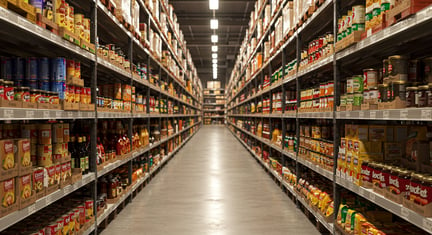BRCGS’s Standard for Packaging and Packaging Materials is being revised with publication due in August 2019. Our expert summarises the key changes you need to know.
The sixth issue of BRCGS Packaging and Packaging Materials has been developed for and by packaging professionals. With a scope covering packaging manufacture, printing and the production of raw materials for the packaging industry, the standard focuses on product safety with a strong emphasis on functional quality and product quality. It’s the most widely used global standard designed for the packaging industry, with nearly 4,500 Certified sites.
Audits for this version will begin in February 2020 so now is the time to prepare your business. LRQA’s technical manager Mark Fincham outlines what you can expect:
1. Food safety culture improvement
We anticipate that the new standard will cite that businesses should have a strategic plan for the development and continual improvement of its safety culture. This should include defined activities involving all sections of the company and an action plan indicating how activities will be implemented, by when and with a review of their assessment. This will bring it in line with the Food Standard and GFSI requirements. We’ve seen a lot of major non-conformities with the Food Standard in this area since it launched - if anyone needs support to prepare for this, our team can help.
2. Product safety and quality management
We expect changes to the hygiene section, in that there will be a removal of the two-tier approach to the standard. This means high and basic hygiene will be consolidated into a single standard which will simplify how the standard is presented. There will also be an emphasis on risk assessment to ensure clauses are applied appropriately in former basic hygiene sites. Revisions may include corrective and preventative action relating to management and root cause analysis, plus, there may be more details provided on the storage and back up of electronic documents as well as what is required in a product declaration of compliance.
There will be a tidy up of the Hazard and Risk Assessment section to remove quality risk assessment to a different section for emphasis and clarity.
Supplier approval will be required via a benchmarked audit or site audit by a 2nd or 1st party audit although low risk suppliers could still be approved by a questionnaire as long as supplier traceability systems are tested initially and every three years afterwards.
3. Environmental Monitoring
There will be new clauses to meet GFSI requirements.
The draft standard indicates that there will be a new section on raw material management which is a new environmental control involving a risk assessment of loss damage and spillage of materials and putting controls in place.
There will also be an additional voluntary module to address any environmental impact of plastic pellet spillage aligned with Operation Clean Sweep (OCS).
4. Product and process control
It seems likely that product development will have a new clause on documented procedure and controls of transfer of customer requirements to the businesses own systems. There is also going to be new clauses relating to equipment setting for safety which can only be changed by trained and authorised personnel, plus disposal of samples, validation of test methods and positive release controls.
5. Training & competence
A new clause requiring the business to demonstrate how changes in procedure, practises and working methods are communicated will be included here.
As with all the standards we offer, we provide dedicated training on BRCGS Packaging to ensure your business is ready for the changes before launch.
Additionally, our experts will be on hand to offer complementary services such as tailored Gap Analysis assessments, BRCGS’s Culture Excellence module and all other major GFSI-aligned audits and assessments.
More information about LRQA's wide range of food assurance services can be found here.




